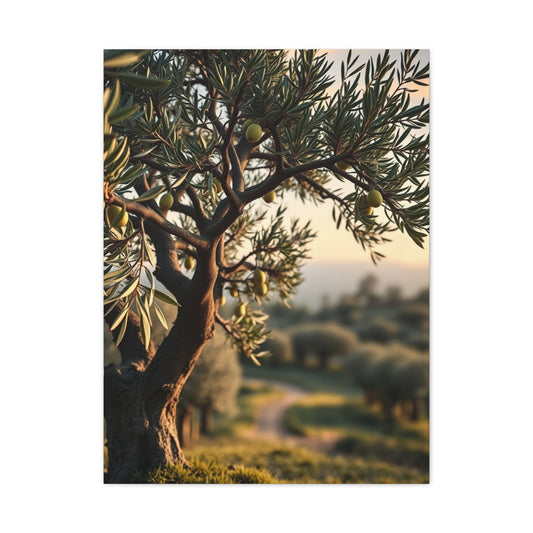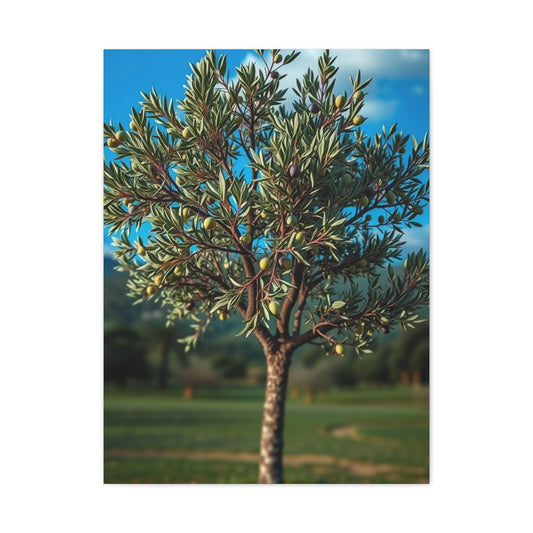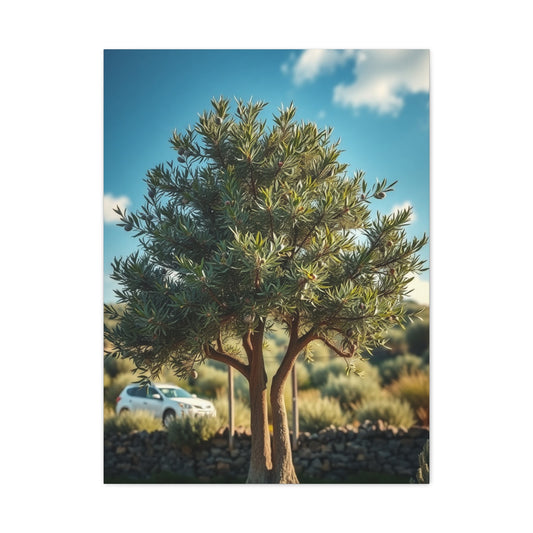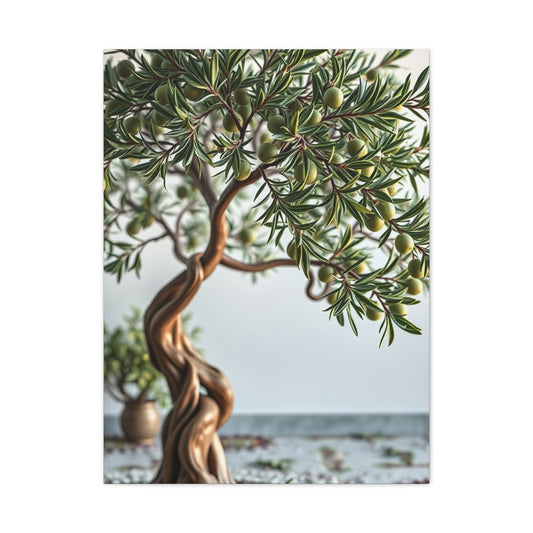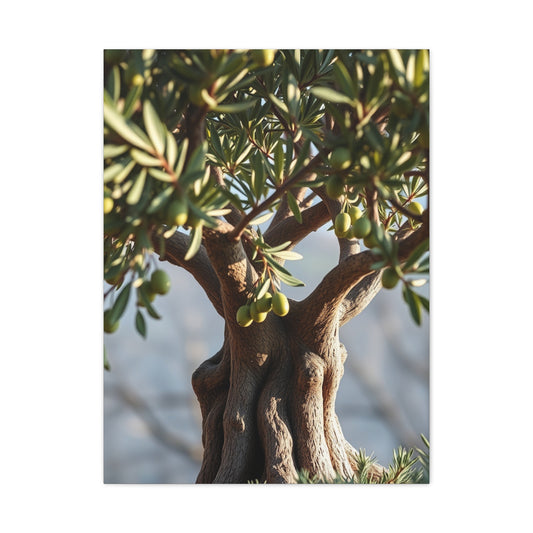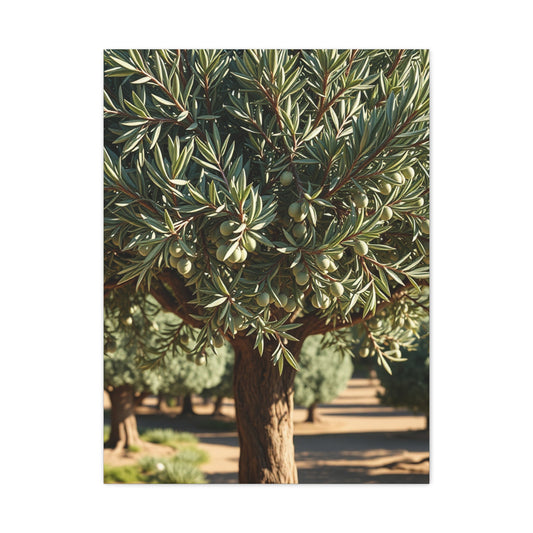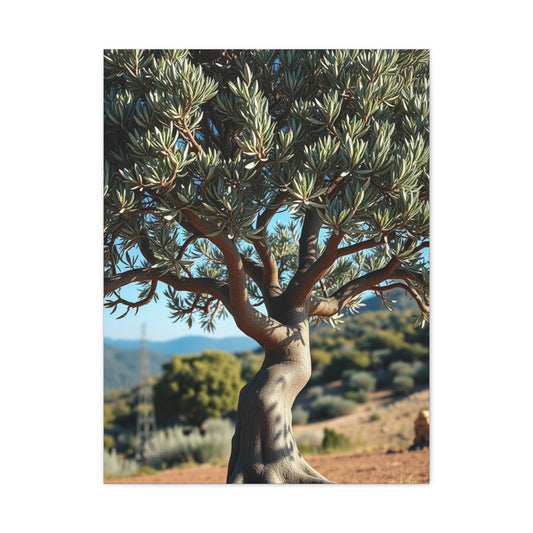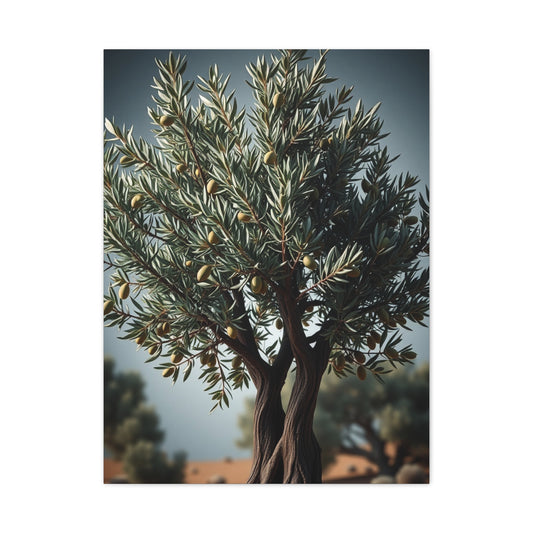Olive Trees Meet Wall Art: Quick Transformations for Elegant Living Spaces
Decorating with olive trees has become an increasingly popular way to merge timeless natural beauty with contemporary home design. These trees, whether living or replicated through high-quality artificial options, hold a unique ability to soften interiors, complement diverse styles, and add a quiet aura of elegance. From Mediterranean villas to modern minimalist apartments, olive trees have transitioned from being purely agricultural treasures to becoming celebrated decorative elements. Their muted silvery-green foliage offers a versatile backdrop that pairs beautifully with different textures, wall colors, and artistic themes.
The olive tree is not just another plant—it embodies symbolism, cultural depth, and aesthetic richness. When brought indoors, it becomes more than just décor; it transforms into an anchor for design expression. From serving as a dining table centerpiece to acting as a subtle accent in the living room, olive trees breathe serenity into a space. Additionally, incorporating olive tree wall art introduces another layer of creativity, enabling homeowners to extend the theme into two dimensions. Paintings, canvas prints, or handcrafted illustrations of olive branches create visual harmony when combined with live greenery.
This guide delves into the profound appeal of olive tree decorating, tracing its historical significance, exploring essential foundations of design integration, categorizing stylistic approaches, and offering practical applications for various rooms in the home. The emphasis lies in using olive trees not merely as plants but as holistic design elements that enhance the rhythm and atmosphere of an interior.
Historical Background
The history of the olive tree stretches thousands of years, intertwined with mythology, cultural traditions, and spiritual symbolism. In ancient Greece, the olive branch was revered as a symbol of peace and prosperity. Victors of athletic competitions were crowned with olive wreaths, highlighting their role as a token of honor. In Mediterranean societies, olive oil became an essential element of daily life, celebrated not only for nourishment but also for its ritualistic and medicinal applications.
This historical richness makes olive trees far more than ornamental greenery. When placed in modern interiors, they serve as subtle references to an enduring legacy. Homeowners who integrate olive trees into décor are not just selecting a plant; they are echoing centuries of tradition. Their presence in art throughout history—depicted in classical frescoes, tapestries, and religious paintings—further demonstrates their relevance as aesthetic motifs. This same tradition continues today when olive tree wall art is introduced into contemporary homes, bridging past and present through visual continuity.
The rustic quality of olive wood and the shimmering foliage remind us of sunlit Mediterranean groves, evoking a sense of tranquility and nostalgia. Decorating with olive trees is thus both a nod to history and a reimagination of its relevance in modern interiors. Every placement, whether in a living room corner or as an intricate mural, becomes part of this narrative, blending the old with the new.
Core Concepts and Foundations
At the heart of olive tree decorating lies a fusion of nature, design, and symbolic depth. The foundational concept is balance. Olive trees are understated yet impactful, meaning they fit seamlessly into diverse design approaches without overwhelming a space. Their muted tones harmonize with earthy palettes, monochromatic schemes, and even vibrant hues by serving as grounding elements.
Another foundational principle is versatility. Olive trees adapt to various roles: a centerpiece in dining rooms, an accent beside furniture, a statement piece in entryways, or even a backdrop in a bedroom. Their adaptability also extends to artistic expression. Olive tree wall art allows homeowners to explore visual interpretations that range from abstract depictions to realistic botanical illustrations. When combined with real plants, such art creates layered depth, making interiors more dynamic.
Texture is another crucial element. Olive trees carry a subtle, silvery sheen in their leaves, which pairs beautifully with natural materials such as linen, rattan, stone, and terracotta. Using these textures together creates cohesion and emphasizes the organic spirit of Mediterranean-inspired design. Lighting plays a significant role, too, as highlighting an olive tree with natural or artificial light can shift its presence from a subtle accent to a striking focal point.
Ultimately, olive tree decorating is built on fthe oundations of harmony, symbolism, and sensory connection. When thoughtfully placed, these trees transcend decoration, fostering environments that feel warm, grounded, and timeless.
Types and Categories
Olive tree decorating ideas can be explored through different categories, each offering unique visual and atmospheric contributions.
One category is the use of live olive trees. These bring authenticity, movement, and seasonal changes into interiors. While they require proper care—ample sunlight, well-draining soil, and mindful watering—the reward is a living, breathing element that evolves with time. Live olive trees are ideal for homeowners who enjoy tending to plants and wish to create a bond with their décor.
Artificial olive trees, on the other hand, represent another significant category. Modern craftsmanship has enabled highly realistic replicas that capture the delicate hues and textures of genuine foliage. These are ideal for spaces with limited sunlight or for homeowners who prefer low-maintenance solutions. Artificial trees also allow for more creative freedom in placement since they are not bound by natural growth requirements.
A third category lies in artistic interpretations, particularly olive tree wall art. Paintings, digital prints, or handcrafted tapestries depicting olive branches extend the presence of the tree into flat surfaces. This category works well for those who may not want the upkeep of plants but still admire the aesthetic and symbolic presence of the olive motif. Wall art can be abstract, focusing on the fluid lines of branches, or realistic, capturing the fine details of leaves and fruit.
Another approach involves olive tree-inspired décor items such as patterned textiles, sculptural accents, or carved wooden objects. These smaller elements complement both live and artificial trees, weaving the theme throughout the space without overwhelming it. By combining categories, homeowners can create layered interiors where physical plants, wall art, and thematic accents interact to form a cohesive visual language.
Practical Applications
Olive Tree Centerpiece for Dining Spaces
Using an olive tree as a centerpiece brings both elegance and intimacy to dining areas. A small potted tree placed in the center of a rustic wooden table instantly creates a focal point. To amplify its effect, homeowners can surround the tree with votive candles, ceramic bowls, or seasonal elements like pinecones during winter and seashells in summer. The key is layering items in a way that enhances but does not overshadow the tree itself. This arrangement establishes a convivial atmosphere, turning meals into experiences rather than routine gatherings.
Incorporating Olive Trees into Living Rooms
Living rooms benefit greatly from the height and texture provided by olive trees. Positioning a tall tree in a woven basket planter by a window or beside a reading nook introduces both scale and softness. When placed near natural light, the silvery foliage creates shimmering reflections, amplifying brightness in the space. Olive trees also pair beautifully with textured rugs, linen drapes, and wooden coffee tables, balancing modern and rustic elements.
Olive Tree Wall Art for Visual Impact
Wall art featuring olive trees is a powerful tool for adding dimension and character. Large canvas paintings can anchor a wall behind a sofa, while smaller framed prints work well in hallways or bedrooms. The theme of olive branches symbolizes growth, harmony, and resilience, making it a meaningful addition. Pairing olive tree wall art with muted-toned furniture ensures that the artwork remains a focal point. Tapestries with woven olive motifs can also introduce warmth, texture, and cultural flair into interiors.
Bedrooms with Subtle Olive Accents
Bedrooms call for serenity, and olive trees naturally align with this requirement. A small tree placed in a clay pot near the bedside table or at the foot of the bed introduces a soothing presence. For those who prefer minimalism, olive tree wall art in delicate watercolor styles can create calming imagery without overwhelming the space. Combined with linen bedding in earthy shades, the effect is a sanctuary-like atmosphere conducive to relaxation.
Entryway Statements
The entryway sets the tone for the home, and an olive tree positioned near the door creates a welcoming gesture. Whether live or artificial, pairing the tree with a console table, a woven basket for storage, and olive-themed wall art above completes the vignette. This arrangement offers a warm first impression and communicates thoughtful design from the very moment guests arrive.
Blending with Outdoor-Indoor Transitions
For homes with patios or sunrooms, olive trees can act as connectors between outdoor and indoor living. Positioning trees near glass doors or large windows blurs the boundaries, creating a sense of continuity. Complementing these areas with wall art depicting olive groves or branches further ties the two worlds together, reinforcing the natural theme.
Techniques and Methods
Incorporating olive trees into interior design requires a balance of placement, styling, and supporting décor elements. Successful techniques start with proportion and scale. A tall olive tree should not overwhelm a small room, while a diminutive potted tree should not disappear in an expansive living space. Choosing the right size ensures harmony and avoids visual imbalance. For compact apartments, slender artificial trees in narrow planters maintain presence without encroaching on floor space. In larger homes, two tall trees flanking a fireplace or entryway provide symmetry and a sense of grandeur.
Another method involves container selection. The planter or pot holding the olive tree influences the overall mood of a space. Earthen terracotta evokes Mediterranean simplicity, while sleek ceramic vessels pair well with contemporary interiors. Woven baskets offer texture and warmth, making them ideal for casual and rustic settings. Decorative bases, when paired thoughtfully, allow the tree to blend seamlessly with the surrounding décor rather than standing out awkwardly.
Layering is a technique often overlooked yet incredibly effective. An olive tree can be elevated with surrounding accents such as lanterns, books, or sculptures. This method transforms the tree from a solitary object into part of a curated vignette. Similarly, layering extends to wall art. Placing olive tree-themed paintings or prints behind or adjacent to live trees creates a multidimensional interplay between real and depicted elements. This strategy establishes rhythm in the design and adds depth to otherwise flat surfaces.
Lighting is another method that enhances the olive tree’s character. Spotlights angled upward can dramatize the branches, creating intriguing shadows on walls and ceilings. In dining areas, candlelight placed near smaller trees adds intimacy, while in living rooms, a floor lamp positioned beside a tree can accentuate its delicate foliage. Natural daylight remains the most flattering, especially when filtered through sheer curtains, allowing the silvery-green leaves to shimmer.
Finally, seasonal styling is a versatile method to keep olive tree décor fresh. In spring, pairing trees with blossoms and bright ceramics injects energy, while autumn invites richer tones like ochre and deep terracotta alongside rustic olive accents. During winter, olive trees pair well with soft textiles, candles, and subdued wall art depicting branches laden with fruit. This adaptability ensures the theme remains relevant year-round without feeling repetitive.
Challenges and Common Mistakes
While olive trees elevate interiors, several challenges often emerge during the decorating process. A common mistake lies in neglecting scale. Placing an oversized tree in a narrow hallway makes the space feel cramped, while a small tree in a large living room loses significance. Correct proportion ensures that the tree complements rather than competes with the space.
Another challenge involves the care and maintenance of live olive trees. Many homeowners underestimate their light requirements. Olive trees thrive in bright, direct sunlight, and placing them in dim corners results in weakened foliage or stunted growth. Watering inconsistencies also lead to issues, as these trees prefer soil that is allowed to dry slightly between watering. A frequent mistake is overwatering, which causes root rot. For those unable to provide such conditions, artificial alternatives serve as a more practical solution while still achieving aesthetic goals.
Design mistakes are equally common. Placing an olive tree without considering the surrounding elements can make it appear isolated. For instance, positioning a tree in a plain corner without complementary textures, furniture, or wall art diminishes its impact. A lack of layering reduces visual richness, leaving the tree looking like an afterthought rather than an integrated feature.
Another mistake arises when pairing wall art. Choosing artwork that clashes with the natural elegance of olive motifs can disrupt harmony. For example, overly vibrant neon palettes may conflict with the muted tones of the tree. Instead, selecting neutral or earthy wall art with botanical inspiration ensures cohesion.
Artificial trees, while convenient, pose challenges when chosen poorly. Low-quality replicas appear plastic and diminish the authenticity of interiors. Another common issue is failing to adapt the artificial tree to the space through styling. Simply placing a faux tree in a pot without accessorizing creates a lifeless impression. Enhancing artificial versions with natural soil covers, decorative stones, or woven baskets makes them indistinguishable from living plants.
Finally, one of the subtler challenges is overusing the theme. A room filled with olive tree motifs on every wall, textile, and corner risks becoming monotonous. Balance is essential. Integrating olive elements selectively, alongside complementary natural themes like linen, stone, or rattan, prevents over-saturation while preserving the uniqueness of the motif.
Trends and Future Outlook
Olive tree decorating has evolved beyond being a fad, embedding itself as a long-term trend in both residential and commercial spaces. The growing preference for biophilic design, which emphasizes human connection to nature, ensures olive trees remain central to future interiors. Their understated beauty aligns perfectly with this philosophy, promoting calmness and balance while reducing visual clutter.
One emerging trend is the integration of olive trees into minimalist interiors. The muted palette of Scandinavian design, characterized by pale woods and soft neutrals, pairs seamlessly with the subtle silvery leaves of olive trees. Rather than filling rooms with numerous plants, homeowners increasingly prefer one or two statement olive trees complemented by abstract wall art. This selective use reflects a broader trend of intentional minimalism, where every piece is chosen for impact.
Another trend involves large-scale wall art installations. Rather than relying solely on framed prints, homeowners are embracing oversized murals or textured wall coverings featuring olive branches. These immersive artworks transform plain walls into expansive landscapes, creating an illusion of depth and serenity. Combined with live or artificial trees, they produce a layered biophilic environment that feels both natural and artistic.
Technology is influencing the future of olive-inspired décor as well. Smart planters equipped with irrigation sensors and lighting controls allow homeowners to maintain live trees with minimal effort. This innovation ensures the survival of olive trees in urban settings where natural conditions may be limited. Additionally, advancements in manufacturing have led to ultra-realistic artificial trees that rival live versions in detail, making them a viable alternative for spaces with poor light conditions.
Sustainability is another factor shaping future trends. Olive wood furniture, reclaimed pots, and eco-friendly planters complement the tree theme while aligning with environmentally conscious living. Designers are increasingly using handcrafted olive-inspired wall art created from sustainable materials like clay pigments, recycled paper, or natural textiles. This shift reflects a broader movement toward ethical consumption in home décor.
In commercial spaces, olive trees are becoming staples of cafés, boutique hotels, and wellness studios. Their calming aesthetic enhances customer experience, making them ideal for businesses that wish to foster relaxation and connection. As such trends continue, olive tree motifs are likely to spread beyond private homes into shared environments, becoming universal symbols of balance and style.
Looking ahead, the fusion of tradition and modernity will dominate the future of olive tree decorating. While their historical symbolism remains timeless, contemporary interpretations through innovative art, minimalist placements, and technological integration ensure they remain relevant in ever-changing design landscapes.
Expert Insights
Interior designers and horticultural specialists consistently highlight the unique role olive trees play in modern homes. Experts note that the muted color palette of olive foliage makes it a rare plant that does not clash with existing décor. Unlike vibrant tropical plants, olive trees adapt to nearly any scheme, from rustic Mediterranean to sleek industrial lofts. This adaptability is one reason many designers prefer them as focal points over more flamboyant greenery.
Design professionals also stress the psychological impact of olive trees. Their historical symbolism of peace and resilience resonates subconsciously, making interiors feel grounded. Psychologists working in environmental design argue that such symbolic elements contribute to emotional well-being, reminding occupants of continuity and heritage even in fast-paced urban environments.
From a horticultural perspective, specialists emphasize that live olive trees, though resilient, need specific conditions to thrive indoors. They advise homeowners to rotate the tree periodically to ensure even sunlight exposure and to prune gently for shape without excessive trimming. Experts also recommend occasional placement outdoors during warmer months to rejuvenate growth, a practice that balances indoor aesthetic needs with natural vitality.
In the realm of wall art, art curators observe a rising demand for olive-themed pieces that go beyond traditional realism. Contemporary interpretations in mixed media, abstract styles, and textural reliefs are gaining popularity. Curators explain that olive imagery appeals to both modern and traditional tastes, bridging generational gaps in art appreciation. By pairing olive wall art with living plants, homeowners create a dialogue between natural and artistic expressions, enriching the narrative of their interiors.
Design experts further note the importance of context when placing olive trees. A common professional recommendation is to anchor the tree with complementary décor, such as natural fiber rugs, earthy ceramics, or rustic wood furniture. This integration prevents the tree from appearing isolated. Many designers suggest considering sightlines as well—ensuring that when someone enters a room, the tree contributes meaningfully to the visual flow rather than being tucked away unnoticed.
In future-forward insights, sustainability consultants highlight the increasing importance of eco-friendly choices. They advocate for ethically sourced olive wood products, biodegradable planters, and artisanal wall art made from renewable materials. Their view is that olive tree decorating is not just about aesthetic beauty but about aligning with the values of environmental stewardship.
In summary, experts across multiple fields recognize olive trees as versatile, meaningful, and forward-looking design elements. Their advice emphasizes balance, care, and integration, ensuring that olive trees and their artistic counterparts remain enduring staples of refined home décor.
Emerging Trends in Wall Art
The evolution of wall art continues to redefine the role of decorative elements within interiors, and olive tree motifs are at the forefront of this progression. Emerging trends reveal a shift from purely ornamental pieces to immersive and experiential art forms that interact with space and mood. Olive tree wall art is no longer confined to small framed prints; it now spans large-scale murals, textured installations, and digital interpretations that combine natural inspiration with modern innovation.
One major trend is the rise of oversized canvas works. These grand pieces extend across entire walls, creating a panoramic effect that transforms ordinary living rooms and dining areas into atmospheric settings. An olive grove mural painted in soft, muted tones, for example, can evoke a Mediterranean landscape, giving occupants the sensation of dining among the trees. Such large-scale art often replaces the need for multiple smaller decorations, functioning as a singular focal point.
Another growing trend involves textured wall art. Artisans are using materials like plaster, clay, and woven textiles to create relief works where olive branches extend subtly outward from the surface. This tactile dimension enhances depth and adds a sculptural element to otherwise flat walls. Unlike conventional paintings, textured wall art interacts with changing light throughout the day, producing shifting shadows that bring a sense of dynamism to interiors.
Digital art is also influencing the trajectory of olive-inspired design. With advancements in projection mapping and high-resolution screens, homeowners can now display animated wall art that simulates the gentle swaying of olive branches in a breeze. These moving visuals merge technology with tradition, offering an ever-changing piece that adapts to mood or occasion.
Sustainability is shaping the artistic landscape as well. Reclaimed wood panels painted with olive motifs or recycled paper prints dyed with natural pigments are becoming popular among eco-conscious homeowners. The trend reflects a broader cultural movement toward authenticity, where the artwork not only represents nature but is created using methods that honor it.
Another emerging preference is for cultural reinterpretations of olive imagery. Artists are blending traditional Mediterranean styles with abstract minimalism or contemporary geometry, producing art that appeals across generations. These hybrid works reflect global influences and resonate with modern homeowners who seek uniqueness without abandoning cultural depth.
The future of wall art lies in its ability to interact, adapt, and resonate with personal narratives. Olive tree wall art exemplifies this by offering themes that are timeless, versatile, and adaptable to new mediums. Whether through murals, textiles, or projections, the olive motif continues to grow as a symbol of serenity and style in the ever-evolving field of interior decoration.
Step-by-Step Guides
Creating an Olive Tree Centerpiece with Wall Art Pairings
Step one begins with selecting the appropriate size of tree for the space. A small tabletop olive tree works best for intimate dining areas, while taller versions suit larger rooms. Step two involves choosing a complementary wall art piece that echoes the tree’s character. For instance, a watercolor painting of olive branches can be placed on the wall adjacent to the table, reinforcing the theme without overwhelming it. Step three is styling the centerpiece with layered accents. Use a rustic tray to anchor the tree and surround it with candles or seasonal objects. Step four focuses on lighting, where a pendant light or chandelier positioned above highlights both the centerpiece and the wall art, unifying the arrangement.
Positioning Olive Trees in Living Rooms with Artistic Accents
The first step here is identifying focal points within the room. Corners near large windows or empty spaces beside sofas often work well. Next, place a tall olive tree in a planter that reflects the overall interior mood. Then, select wall art that frames the tree visually. For example, hanging a linear drawing of olive branches directly behind the tree creates depth, making the living room appear layered. Another step is incorporating supporting décor such as woven rugs or neutral-toned cushions that echo the color palette of the wall art. Finally, adjust natural and artificial lighting to highlight both the tree and the artwork, ensuring the pairing feels deliberate and integrated.
Designing Bedrooms with Olive-Inspired Serenity
Begin by deciding the placement of the olive element, whether it is a live tree at the bedside or a framed print above the headboard. If using a tree, select a smaller version that does not dominate the room. Pair it with delicate wall art in soft, muted colors. Step three involves layering textures such as linen bedding and clay-toned pottery that echo the natural theme. Step four is to balance minimalism with warmth by keeping accessories subtle, allowing the tree and artwork to serve as focal points. Step five focuses on lighting, with warm bedside lamps highlighting the artwork while natural light nurtures the tree during the day.
Entryway Styling with Olive Themes
The entryway provides an opportunity for first impressions. Start by choosing a medium-sized olive tree in a textured pot, placing it beside a console table. Next, position wall art directly above the table featuring olive motifs, either in a contemporary sketch style or traditional painting. Step three is adding supporting objects such as woven baskets, ceramic bowls, or sculptural candles to tie the theme together. Step four involves considering sightlines: the tree and artwork should be visible as soon as the door opens, guiding the eye naturally. Step five is ensuring proper illumination with overhead lights or wall sconces to highlight the vignette, making the entryway feel welcoming and intentional.
Blending Indoor and Outdoor Continuity
Step one involves identifying transitional spaces such as sunrooms or patios that serve as bridges between indoors and outdoors. Place a tall olive tree near the boundary, either beside sliding doors or windows. Step two is to select wall art that depicts outdoor olive groves or branches, reinforcing the theme of continuity. Step three is to use natural textures like stone flooring, linen drapery, or wooden furniture that visually link interior and exterior elements. Step four involves layering accents such as woven rugs or ceramic lanterns to soften the transition. Step five is adjusting lighting—string lights outdoors and soft lamps indoors—so that both areas feel visually connected.
Pairing Artificial Trees with Modern Art
Artificial trees require thoughtful styling to avoid lifelessness. Begin by selecting a high-quality replica with realistic foliage. Place it in a planter filled with stones or moss to enhance authenticity. Step two is positioning it against a wall, where art becomes its companion. Choose contemporary olive-themed prints or abstract interpretations to modernize the arrangement. Step three involves layering textures, such as metallic vases or sculptural elements, to elevate the tree’s presence. Step four focuses on ensuring proportionality: the size of the wall art should complement the scale of the tree, neither overwhelming nor diminishing it. Step five is lighting, where spotlights can be used to highlight the tree and artwork simultaneously.
Techniques for Integration
The integration of olive trees into home interiors requires more than simply placing them in a pot or hanging wall art with botanical motifs. The most successful interiors emerge when these elements are harmonized with architectural structure, furniture placement, and overall atmosphere. Integration begins with understanding the spatial rhythm of a room. An olive tree should not obstruct movement, nor should wall art feel disconnected from sightlines. Instead, they must align naturally with the flow of the space, guiding the eye rather than competing for attention.
One effective technique involves layering with textures. Olive trees with their silvery-green foliage contrast beautifully with surfaces such as rustic stone, woven rattan, polished wood, or soft linen fabrics. By repeating these textures across furniture, drapery, and flooring, the tree feels embedded within the interior narrative. Similarly, olive tree wall art gains strength when paired with tactile elements such as clay sculptures, woven wall hangings, or earthen ceramics. This ensures that the motif resonates across multiple dimensions rather than existing in isolation.
Another technique lies in the careful selection of color palettes. Olive leaves have a muted tone that complements earth-inspired hues such as sand, terracotta, ivory, and deep walnut. Designing a palette that echoes these tones allows wall art and live or artificial trees to merge seamlessly. Neutral backdrops allow olive elements to stand out subtly without overwhelming the room. In contrast, pairing them with bold, jewel-like tones such as emerald or indigo can produce striking contrasts that highlight the understated elegance of the tree.
Lighting is equally crucial for integration. A tree placed in dim corners appears lifeless, while improper lighting of wall art can diminish its impact. Natural light works best, especially when filtered through sheer fabrics that soften its intensity. For nighttime, a combination of ambient lighting and focused spotlights can emphasize both the tree and the artwork. Positioning lamps so their glow reflects off foliage creates a shimmering effect, while directed light on a painting or tapestry emphasizes its detail.
Scale and proportion serve as another pillar of integration. A towering olive tree suits grand living rooms with high ceilings, while a small potted tree enhances cozy bedrooms or intimate dining spaces. Similarly, expansive wall art works well in open layouts, whereas smaller framed prints feel appropriate in hallways or nooks. Maintaining proportional relationships between the tree, art, and surrounding furniture prevents visual imbalance and ensures cohesive design.
Integration also involves placement strategies. Symmetry can be achieved by flanking doorways or mantels with matching olive trees, while asymmetrical arrangements using a single tree balanced by wall art create visual tension and energy. Entryways benefit from vertical integration, with a tree placed beside a console table and wall art hung above it, forming a unified vignette. In transitional areas such as sunrooms, combining olive trees with large windows and panoramic murals establishes continuity between indoor and outdoor realms.
Ultimately, successful integration requires intention. Every placement, palette, and accessory must contribute to a broader design narrative. Olive trees and their artistic representations flourish most when treated not as isolated objects but as components of a holistic atmosphere that embodies serenity, heritage, and natural beauty.
Advanced Styling Approaches
Moving beyond foundational techniques, advanced styling approaches reveal how olive trees can become central to innovative design. One approach is thematic layering, where the olive motif is repeated across various elements in subtle ways. For example, pairing a live olive tree with wall art depicting branches, olive-patterned textiles, and olive wood furniture produces continuity without overwhelming the senses. The repetition of motifs across multiple media reinforces the design narrative while maintaining sophistication.
Another approach is seasonal reinterpretation. Olive trees, both real and artificial, provide a flexible backdrop for seasonal décor. In spring, they can be adorned with delicate blossoms or pastel-toned accessories, while summer styling emphasizes light fabrics and Mediterranean accents. Autumn welcomes richer tones, with golden-hued wall art and rustic vessels complementing the foliage. Winter invites cozy textures like wool throws and candle arrangements surrounding the tree, creating a warm, sanctuary atmosphere.
Cultural fusion represents another advanced method. Olive trees carry deep Mediterranean symbolism, but when integrated with other global styles, they acquire new meanings. In Japanese-inspired interiors, pairing olive trees with minimal ink-style wall art produces a tranquil, Zen-like aesthetic. In Moroccan design, olive motifs combined with intricate tiles and lanterns create a vibrant, layered space. These fusions allow homeowners to personalize their interiors while honoring global traditions.
Another advanced method is the use of mixed media art. Combining paintings with sculptural elements or digital projections creates dynamic wall art that interacts with live plants. Imagine an olive tree standing before a wall projection of swaying branches, where reality and illusion merge to create immersive design. Such experimental approaches embrace both tradition and innovation, producing interiors that feel modern yet timeless.
Advanced styling also involves experimentation with unconventional spaces. Olive trees in bathrooms, for instance, paired with stone tiles and botanical wall art, create spa-like sanctuaries. In home offices, placing a tree beside a desk alongside motivational olive-themed prints provides both aesthetic charm and mental calm. Even kitchens can benefit, with small potted trees or murals above dining nooks reinforcing the connection between food, heritage, and natural abundance.
By embracing these advanced approaches, homeowners move beyond basic placement into realms of storytelling, cultural exploration, and sensory engagement. The olive motif thus transcends decoration, becoming a lifestyle statement woven into the very fabric of the home.
Common Pitfalls and Solutions
Despite the appeal of olive tree decorating, common pitfalls often undermine its effectiveness. One frequent error involves cluttering a space with too many motifs. Overusing olive trees, wall art, and patterned textiles together can create visual overload, diminishing the elegance of the theme. The solution is restraint: focus on one or two statement pieces and allow surrounding elements to complement rather than compete.
Another pitfall lies in poor-quality artificial trees. Cheap replicas with plastic-like leaves undermine authenticity and reduce the aesthetic value of interiors. Investing in high-quality artificial trees with realistic textures, paired with natural soil covers or decorative stones, resolves this issue by creating a lifelike presence without the need for maintenance.
Improper placement also diminishes impact. A tree positioned in a hidden corner or art hung too high breaks the visual rhythm of a room. The solution is to consider sightlines: artwork should hang at eye level, and trees should occupy visible but unobtrusive positions where they contribute to flow.
Lighting mistakes represent another common issue. Dimly lit wall art loses its vibrancy, while poorly lit trees fade into obscurity. The solution is layered lighting, using a mix of natural and artificial sources. Track lights or sconces directed at artwork, combined with floor lamps highlighting trees, ensure both elements remain visually significant.
Finally, maintenance errors plague live olive trees. Overwatering, poor drainage, and lack of sunlight cause foliage to yellow and branches to weaken. The solution is education: understanding the natural conditions olive trees require and replicating them indoors. For those unable to provide such care, artificial alternatives offer a practical yet equally stylish solution.
By identifying these pitfalls and applying thoughtful solutions, homeowners can preserve the elegance and longevity of olive tree decorating, ensuring that both live plants and wall art remain assets rather than challenges within their interiors.
Expanding the Role of Olive Trees in Future Design
The role of olive trees in design continues to expand as homeowners and designers explore new possibilities. One promising direction is multi-sensory design. Beyond visual appeal, olive trees evoke tactile and even olfactory dimensions. Real trees, with their textured bark and fragrant leaves, engage the senses in ways that wall art alone cannot. Future interiors may integrate these sensory qualities with immersive technologies, such as scent diffusers that replicate the aroma of olive groves alongside visual artwork.
Another expansion lies in sustainable design practices. As environmental awareness grows, designers are turning to olive wood as a renewable material for furniture, frames, and decorative accents. Combining olive wood furnishings with living trees and olive-inspired art produces layered interiors that are environmentally responsible while aesthetically harmonious.
Community-oriented design also presents new opportunities. Shared spaces such as boutique hotels, cafés, and wellness studios increasingly incorporate olive trees as symbols of peace and hospitality. When paired with large-scale wall art installations, they create inviting environments that encourage relaxation and connection. The popularity of these designs in commercial spaces suggests they will continue to influence residential interiors as homeowners seek similar atmospheres of comfort and belonging.
Technological integration will also shape the future. Smart lighting systems that adjust brightness based on time of day will enhance olive tree wall art, while automated irrigation systems will make maintaining live trees easier for urban dwellers. As virtual and augmented reality grow in popularity, homeowners may even project digital olive groves on their walls, creating immersive environments that blur the boundary between physical and digital décor.
These expansions reveal that olive tree decorating is far more than a trend. It is evolving into a lasting design language that adapts to cultural shifts, technological advances, and environmental values, ensuring relevance for generations to come.
Conclusion
The journey of olive tree decorating illustrates the powerful role that natural motifs play in shaping home environments. From ancient symbolism rooted in peace and resilience to modern applications in wall art and design, olive trees have transcended their agricultural origins to become cultural and aesthetic icons. Their integration into interiors is not merely decorative but transformative, offering serenity, continuity, and timeless elegance.
Throughout this exploration, techniques of integration, advanced styling approaches, and solutions to common pitfalls have demonstrated the versatility of olive trees in shaping diverse spaces. Emerging trends in wall art reveal how these motifs adapt across mediums, from textured installations to digital projections, while step-by-step guides provide practical pathways for homeowners to embrace them. Expert insights highlight the psychological and cultural depth they bring, affirming their value as both visual and symbolic elements.
Looking toward the future, olive tree decorating stands at the intersection of tradition and innovation. It honors heritage while embracing sustainability, technology, and evolving artistic interpretations. Whether through live plants, realistic replicas, or wall art in its myriad forms, the olive motif continues to inspire interiors that are harmonious, meaningful, and enduring.
The enduring allure of olive trees lies in their ability to create spaces that are more than functional. They foster atmospheres of calmness, evoke cultural depth, and encourage connection to nature within the domestic realm. In an age of rapid change, these timeless elements remind us of continuity, resilience, and the simple beauty of natural forms. By integrating olive trees and their artistic representations with intention and creativity, homeowners craft not just decorated rooms but living sanctuaries that resonate with peace, style, and lasting significance.


